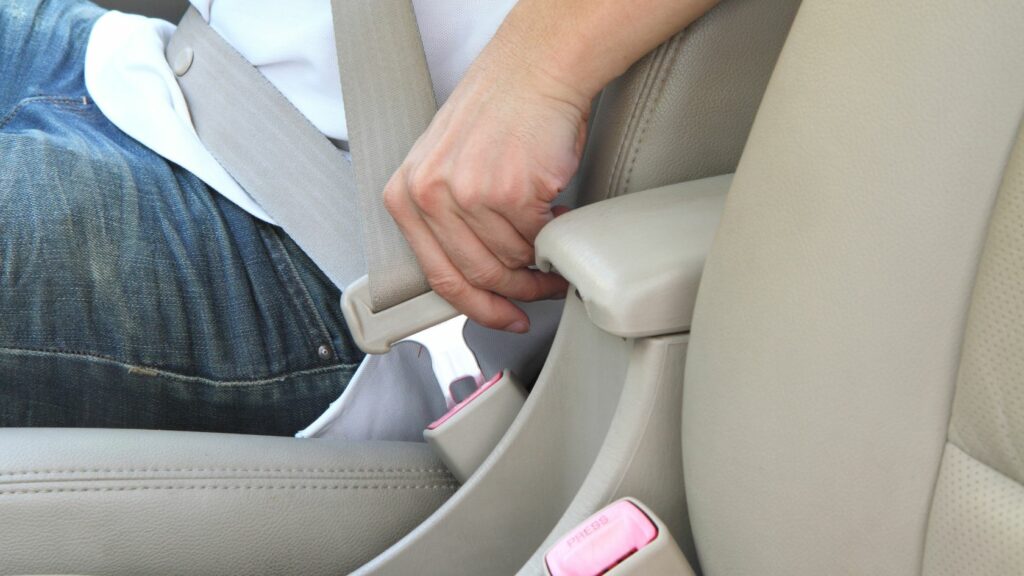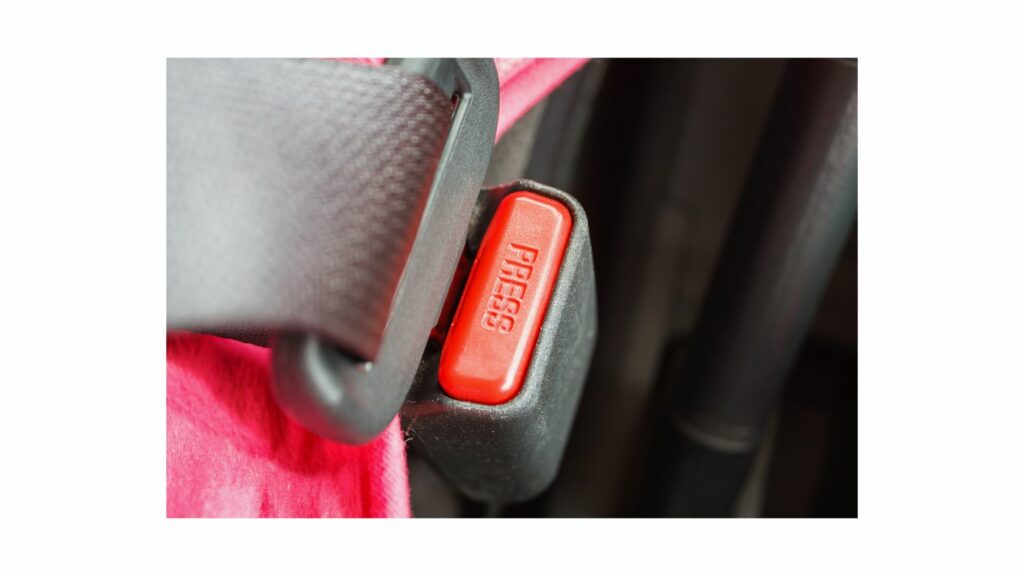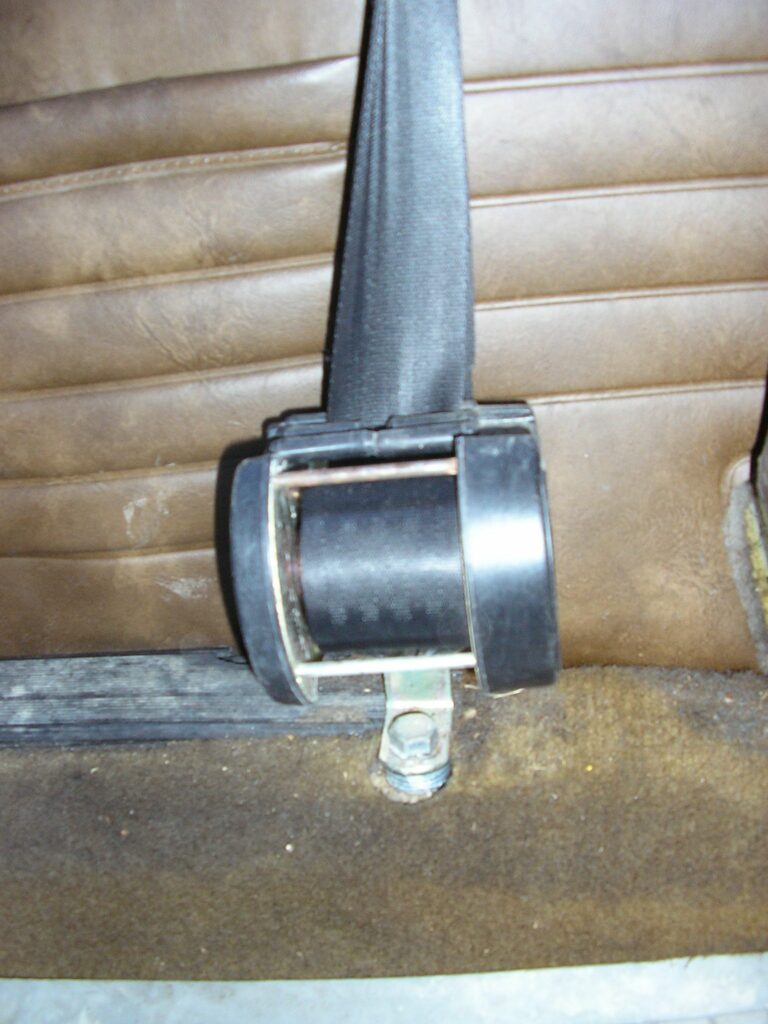
Seat belts in a car are meant to save lives. But in many emergencies, car owners/occupants couldn’t come out of the vehicle due to stuck/locked seat belts. So, why do seat belts get stuck?
Well, there are reasons related to seat belt technicalities and some kind of human error that can lead to the malfunctioning of this vital safety component.
Find out more about vehicle seat belts, their functionality, causes that stuck the seat belts, and more importantly how you can overcome this situation by reading this post.
Why do seat belts get stuck?
Seat belts stuck or to term it more correctly get ‘locked’ mainly due to the locking mechanism issues pertaining to retractors, pre-tensioners, sensors, and locks.
Some of the other cause for a seat belt to get stuck could be the accumulation of dirt, debris, or foreign objects in the belt mechanism.
Finally, the age factor and faulty belt mechanism could play a spoilsport not allowing a seat belt to release itself.
Seat belts may also get stuck as a result of aftereffects occurring from a car crash, water submergence, fire, etc.
In any case, it is important to learn the causes of seat belts getting stuck and remain prepared to release yourself in emergency situations.
Causes of seat belts getting stuck
If you tried pulling the seat belt quickly, suddenly applied brakes, or met with an accident then here are the causes that will stuck/lock the seat belt in such circumstances:
Locking mechanism
Different cars are equipped with different seat belt locking mechanisms. The locking mechanism of a seat belt is designed to keep the belt adequately in place during sudden movements or in the event of a collision.
The seat belt locking mechanism works on various types of retractors. Most cars use emergency locking retractors and automatic locking retractors. These retractors feature a sensitive locking mechanism that engages during sudden stops or impacts.

The design of the locking mechanism uses spiral springs, webbing, pre-tensioners, and an explosive-filled piston.
The spiral spring and webbing mechanism automatically winds and retracts when not in use. These mechanisms utilize the vehicle’s deceleration or sudden halt to trigger the locking system and based on the webbing speed lock the seat belt effectively arresting the passenger’s motion during a crash.
Pre-tensioners and explosive-filled pistons make a passenger sit closer to the seat and tighten the seat belt to embrace the impact of sudden collisions or accidents.
The sensitivity and automated features of the seat belt locking mechanism can also falsely engage in certain situations.
For example, sudden movement or jolts like slamming on the brakes or rapid acceleration mainly when going downhill can trigger the mechanism even if there is no actual danger. This false locking can hinder the normal operation of a seat belt.
Here is a detailed video on how the seat belt locking mechanism works for a better understanding:
All in all, if any of the components or safety features of a locking mechanism malfunctions or engage improperly, the seat belt may get stuck or locked.
Dirt, and debris in the belt mechanism
Dirt and debris are very common intruders in the belt mechanism. These objects can accumulate in the retractors where the belt is stored when not in use.
The reasons for dirt and debris could be regular or excessive usage, exposure to external elements, or if the vehicle is not kept clean.

When the belt mechanism is affected by foreign objects, the locking system that works on various sensors and retractors begins to malfunction.
The presence of dirt particles can hinder movement, create friction and binding in the webbing, and interferes with the automated locking mechanism resulting in disengagement, or partial functionality leading a seat belt to get jammed/stuck.
Aging factor in seat belts
Over time, seat belts can become less flexible and more prone to getting stuck due to factors such as wear and tear, exposure to heat and sunlight, weakened retractors, and malfunctioning of the locking mechanism.
The age factor of seat belts and their mechanism deteriorates their materials which are typically made of fabric, webbing, metal components, and plastic parts.
The deterioration of these materials can impede the smooth operation of the seat belt mechanism and cause it to get stuck.
Another victim of aging seat belts is loss of elasticity. The webbing component is made of elastic to allow responsiveness during sudden movements or impacts.
With aging, the elastic properties of the webbing may get impacted, resulting in reduced elasticity making seat belts more prone to getting stuck in a partially extended or retracted position.
Moreover, seat belt retractors contain springs and other mechanisms to allow the belt to extend and retract smoothly. A weakened retractor means a lack of retraction leading to a seat belt getting stuck.
Accidents/collisions
Seat belt mechanisms and locking systems may fail in the event of a car accident or car fire. When you actually need to come out quickly the impact forces generated during an accident can cause damage to the seat belt components limiting your movement.
In a collision, the vehicle experiences rapid deceleration or comes to a sudden stop which sends a signal to the retractors to restrain the occupants as a response to these forces.
Secondly, if the impact is too severe, the vehicle’s structure can deform or undergo significant damage leading to misalignment or shifting of seat belt locking components.
The vehicle may also be subject to various forces that can displace the objects within the cabin that can create an entanglement or obstruction causing the seat belt to get stuck.
While the seat belt locking mechanism is designed to protect occupants during accidents in some cases these mechanisms can malfunction or fail to release properly after the impact causing the seat belt to remain stuck.
How to remove or release stuck car seat belts in emergencies?
The release and removal of a stuck seat belt may get complicated depending on the situation you are in and the cause that lead to a seat belt getting stuck. It is also imperative to remain aware of the technicalities and locking mechanism of a seat belt to release it.
Not all car seat belts are built with the same locking mechanism. If a seat belt is jammed due to malfunctioning of the pre-tensioner technically it won’t be possible to repair it on your own.
Similarly, a faulty or damaged locking mechanism during initial installation needs re-installation or replacement by professionals.
If you find that the seat belt is stuck due to a jammed retractor then follow the below basic steps to release it:
- Try pulling the belt out as far as it will go. Be gentle and ensure not to pull the belt too rough.
- If the belt is retracted your job is done. If it doesn’t retract in one attempt, try giving the belt a gentle tug while pressing the release button and see if it retracts.
- If the belt is still stuck, it may need a resetting process that is more in-depth and technical. It is recommended to take your vehicle to a mechanic to have the retractor reset or replaced.
- The jamming of the retractor may also occur because of obstructions or debris in the seat belt mechanism.
- As such look for items lodged in the retractor or tangled webbing. Also, check if the seat belt webbing is tangled or twisted that could be another reason for a seat belt getting stuck.
- In some cases, applying gentle force to seat belt webbing while slowly pulling it can help release a jammed retractor.
- If the retractor is jammed by the debris you can try cleaning it with a soft brush and some kind of lubricant or spray. After cleaning, try to straighten the webbing and carefully pull the retractor to improve the seat belt movement.
If you try the above steps and the seat belt retractor remains jammed, it is recommended to seek professional help.
In case it is an emergency, the best option to release yourself, is to use a seat belt cutter or an emergency escape tool. These tools are designed specifically for cutting through seat belts which is very helpful and life-saving in emergencies.
If you don’t have an emergency escape tool, one last trick is using your body and movement to escape from a jammed seat belt. Here are the steps to follow:
- Pull the seat belt from the pillar to loosen it a bit. Reclining your seat may give you a better position for pulling and releasing.
- This will help you free your chest and upper body from the loosened seat belt.
- Next, apply the same force to pull the seat belt covering your torso/lap. Once loosened, release your legs and exit the vehicle.
Note: The above steps may seem and sound simple but the effect and results could differ according to your position in the car and seat belt locking mechanism.
Why do seat belts get stuck while driving?
Seat belts get stuck while driving due to various reasons and factors. Some of them are already covered in this post including twisted webbing, debris lodged in the buckle, or malfunctioning of retractor mechanism.
The sensors associated with the locking mechanism of a seat belt are also responsible for jamming the seat belt while driving. If you lean forward too quickly while driving or braking the sensors may engage to restrict your movement.
This is more of a safety feature in response to the sudden movement which is often mistaken for seat belts getting stuck by vehicle owners.
Final thoughts
Seat belts can get stuck due to various factors including mechanical issues in the locking mechanism, lodging debris or foreign objects, effects of age, and accidents/collisions.
Whatever the reason, ignoring the effects of these factors can impede the smooth movement of seat belts which could be life-threatening in emergency situations.
To release a stuck seat belt, some common tips and tricks can be helpful which are mentioned in this post. It is important to address the stuck seat belt issue promptly to ensure its effectiveness of protecting the occupants remain intact.
Regular inspection and maintenance, proper handling, and awareness of potential causes of seat belt issues will help you keep them in good working condition for your own protection as well as your loved ones.
